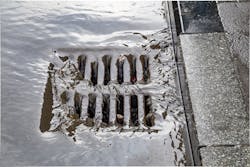Using Trenchless Technology to Repair Infrastructure with Minimal Disruption
Sewer systems are invaluable in storm water management – especially in high rainfall cities. By allowing stormwater to be diverted to the subsurface, underground pipes and culverts keep surface areas free from standing water that can wreak havoc on infrastructure. Traditionally, this maintenance work has involved a significant above-ground presence requiring road blockages, traffic rerouting and ongoing inconvenience and disruption to communities.
Given its subtropical climate, Houston, the nation’s fourth-largest city, deals with a massive amount of stormwater. Its wastewater system is one of the biggest and most complex in the country, and includes more than 6,000 miles of sanitary sewers, 381 wastewater lift stations and 39 wastewater treatment plants. While the city’s experiences with Hurricane Ike in 2008 and Hurricane Harvey in 2017 received national coverage, many “smaller” storms over the years have contributed to the burden on its sewer systems as well – such as 2001’s Tropical Storm Allison, which caused widespread flooding in the Texas Medical Center, the largest medical center in the world.
Fulton Street Rehabilitation Project
As Houston is under a U.S. Environmental Protection Agency consent decree, like many cities, its wastewater infrastructure is subjected to regulatory commitments. The city’s ongoing inspections identified 2.8 miles of 60-inch sanitary sewer suffering high inflow and infiltration and significant risk of failure. The section was located under Fulton Street, a major roadway that also hosts one of the city’s METRORail light rail lines. Over 40,000 residents depend on METRORail’s 23-mile system daily. It connects downtown to the Texas Medical Center, making it vital to medical professionals, patients and visitors who rely on it as their primary means of transportation. Closing Fulton Street for excavation or access requirements would not only shut down the METRORail line but also negatively impact businesses, schools, commuters and residents. This would create major transportation disruptions beyond the immediate area.
The numerous stakeholders involved exhibited a high level of cooperation. In addition to the Texas Department of Transportation and METRORail operations, the Houston Independent School District, multiple City of Houston departments and several homeowners’ associations collaborated to minimize potential loss of business and ensure schoolchildren’s safety.
Geopolymer Solutions
The city evaluated multiple options for rehabilitation and selected spin-cast geopolymer lining because of site restrictions. Work was performed on an existing contract with Vortex Companies’ Quadex Lining System (QLS) – a spin-cast geopolymer application process that utilizes GeoKrete geopolymer for relining. Geopolymers use water as the catalyst to trigger a chemical reaction. GeoKrete is comprised of aluminosilicate powder and an alkaline activator that forms a durable inorganic polymer when mixed with water, yielding high early and long-term strength bonding properties and ideal conditions for precision mixing, pumping and spraying.
This geopolymer forms a monolithic, inorganic polymer structure that is acid resistant and provides surface durability. The chemical composition of the geopolymer makes it resistant to the microbial induced corrosion prevalent in many sewer environments. It is suited for low pH environments.
Vortex designed an internal bypass system that allowed for wastewater to remain in flow during the entire operation. This approach eliminated the need for a traditional bypass, which would have obstructed street crossings and METRORail tracks. The internal bypass enabled the streets to remain open and more importantly, all METRORail lines to remain fully operational, which reduced commuter, business and school disruptions.
Following an extensive cleaning, sewer line cracks, voids and offset joints underwent extensive patching and repair. Geopolymers offer versatility, which proved advantageous. On the Fulton Street project, the geopolymer was spin-cast, spray-applied and troweled on to achieve maximum coverage. It was spray-applied to non-round areas and obstructions, and spin-cast to a 1.5-inch design thickness throughout nearly 5,700 linear feet of pipe.
All stakeholders were unified around the need for a sewer system upgrade and appreciated the city’s concern and attention to minimizing disruptions during the project. Despite challenging site conditions, the approach delivered a fully structural and rehabilitated corrosion-resistant pipe, restored offset manholes and eliminated severe I&I in a safe and cost-effective manner without interrupting traffic or light rail service.
The project was awarded the 2022 Trenchless Technology Project of the Year Award for Rehabilitation. Following the completion of the initial work order issued for approximately 5,700 linear feet of pipe, an additional work order for more than 4,000 linear feet was issued.
Geopolymer pipe lining makes it possible to ensure the functionality of stormwater drainage systems without lengthy disruption to the community. As numerous other cities in the U.S. strive to comply with EPA consent decrees while still managing day-to-day transportation needs, approaches that allow for both to occur simultaneously will be even more important in ensuring safe and effective responses to inclement weather.


